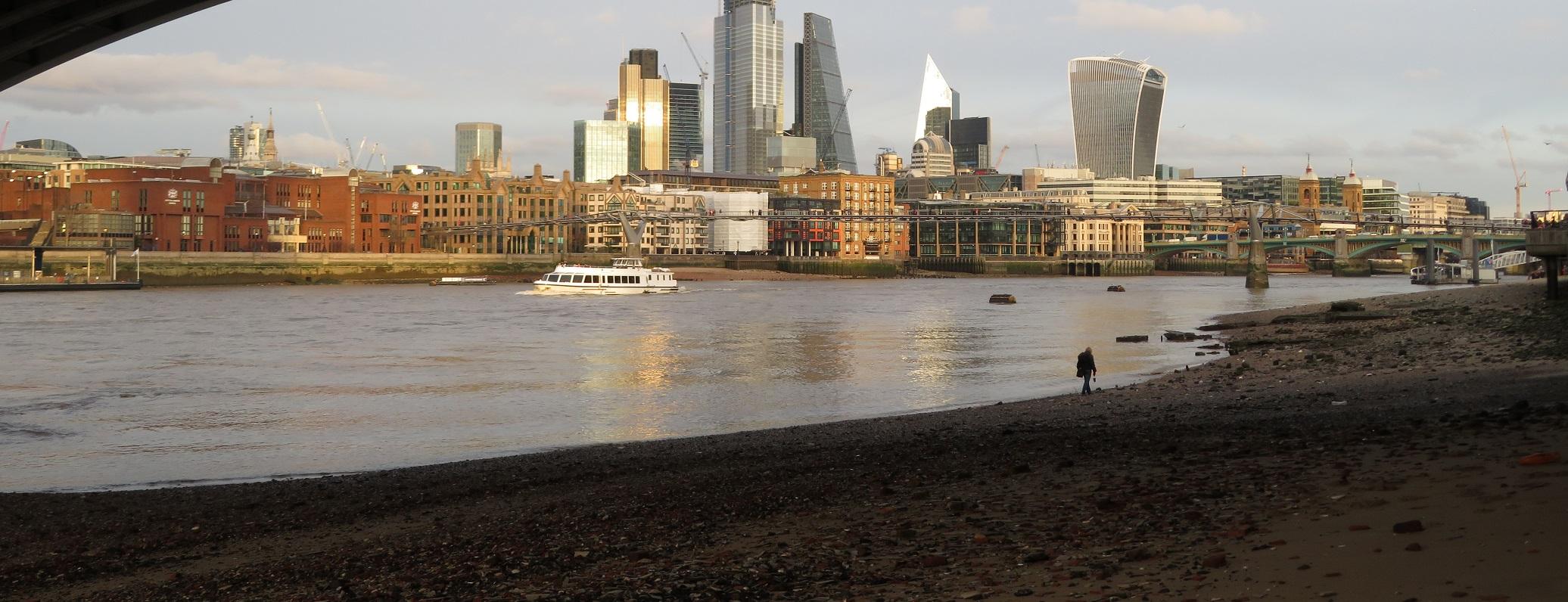


10 Reasons to Take your Children Mudlarking
26 November 2022
Mudlarking, or scavenging for historical objects, is an activity that has been growing in popularity and gaining traction on social media.
But you have questions. Why mudlark? What will we find? Will I get rich? Read ahead for our top reasons to mudlark...
Family Fun!
Mudlarking is great way to spend some quality time with the family whilst scavenging for remnants of the past. Near the Globe Theatre in London is a great place to start. Equipped with a trusty brick-pointing trowel, you’ll be amazed at what you can find.
Time will fly, and before you know it, you’ll have spent a few hours claiming lost treasures and trying not to get stuck in the mud. And…
You Might Strike Gold!
With the tide out, vast stretches of mud are visible. Rare or historic objects have been waiting for thousands of years to be found…by you! From bones to roman coins, it’s a historical lottery with quite good odds.
And whilst you might not find a bag of gold every time, you’ll be rich in memories.
Connect with the Past
Mudlarking is a great way to connect with the history of your town or city. London folk have been losing their belongings and dumping their rubbish for thousands of years, making it a great site for discovering tangible links to our past.
Often, you’ll find that objects are simply waiting to be found, without disturbing the foreshore. Unearthing these objects, trapped in time, can ignite children’s curiosity and imaginations.
Solve Mysteries
Holding something in your hand, from so long ago, can evoke all sorts of feelings, thoughts and questions…How old is this piece? Who was the owner and why is it here? Kids will come up with all sorts of explanations. The challenge then, is to find out…
Cue internet research, library visits, book purchases, museum trips and, before you know it, they’ll be considering a degree in medieval studies from Oxford.
Make a Viral Video
#Mudlarking videos have over 57 million views on TikTok! With interesting finds from a full piggy bank to a quite bizarre, mysterious wooden dog, it’s time to get in on the action.
Record your mudlarking adventures and upload your objects for the world to see! It’s also a great way to document your adventures and look back in years to come.
Make New Friends
Unless you’re using ‘eyes only,’ if you plan to dig, then you’ll need to acquire a license. First, why not try a guided foreshore walk to see if mudlarking is suited for you and your family. You’ll make some new friends along the way which could lead to more mudlarking adventures.
Fresh Air and Exercise
You don’t need to be in the mud all day! Take walks along the shore, whilst ‘getting your eye in’ to spot anything that looks interesting.
Some of the best places to take a foreshore walk include:
· Osea Island, Essex
· Gugh, Isles of Scilly
· Portobello Beach, Edinburgh
· Ynys Gofftan, Wales
· Studland Bay, Dorset
Work with the Museum of London
If you find something that might be over 300 years old, it is your responsibility to report an important find so our history can be recorded.
If you think your find is significant, you should inform the Museum of London, who may keep the artefact for a few months, to identify it correctly. They may even make you an offer of purchase if they feel the object is a key part of our history and should be accessible to everyone.
If you don’t want to get your hands too dirty, take a trip to the Mudlark Gallery, an interactive play space at the Museum of Docklands. Book a free session through the museum’s website.
Get in Touch with Nature
Of course, many of the things you come across whilst larking in the mud may be living creatures. Recent studies of the Thames show it is teeming with life, from seahorses, sharks, harbour seals and even the occasional bottle-nosed dolphin. This is a far cry from when the river was declared ‘biologically dead’ in 1957.
As you sift through the mud, you may come across mini-lobsters, eels, fish and even oysters! Meeting living organisms, and connecting with nature in this way, creates incredible learning opportunities and ultimately, positive, happier and healthier children.
Adopt a New Hobby
Once you’ve tried mudlarking, you’ll be hooked. It’s the perfect way to spend your weekend. So, check the tide times, don your waterproofs, wellies and gloves, then head to the riverbank. What are you waiting for?!
*Hoop advises you to be safe, legal and mindful when mudlarking. If you find anything that looks strange or dangerous, call the authorities immediately. Pay attention to tides and wash your hands thoroughly after touching river mud.
Photo by Lucinda Offer
